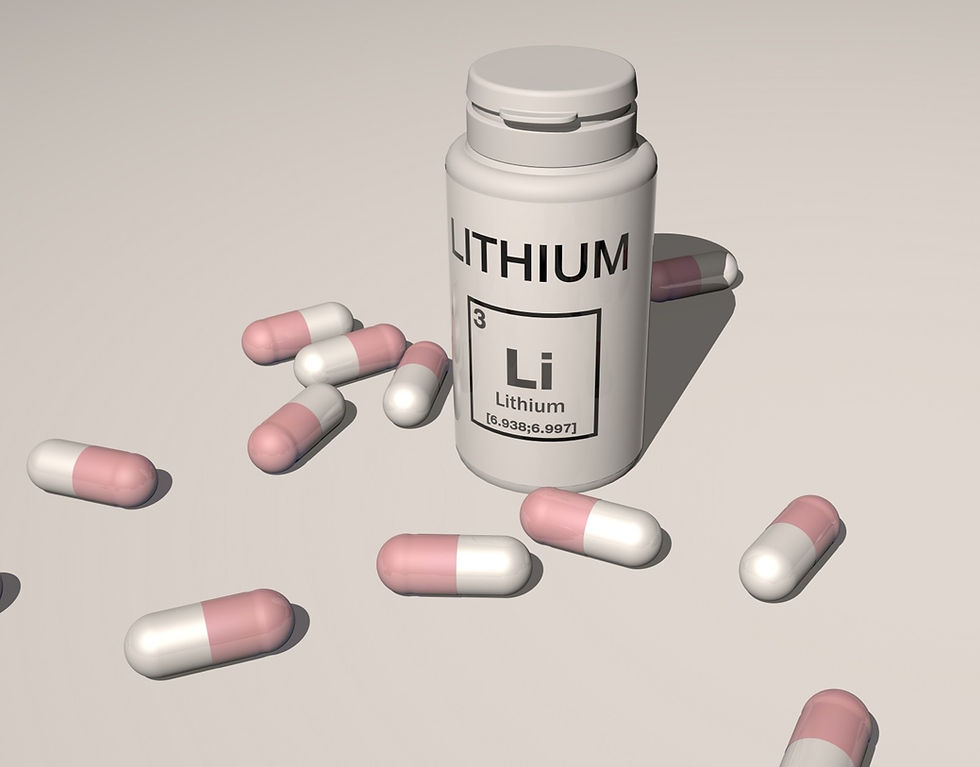Promising Varroa Research
- John Mackay

- Aug 2, 2022
- 3 min read
UNDER THE MICROSCOPE BROUGHT TO YOU BY dnature
By John Mackay
For those that do a typical twice-a-year treatment schedule for varroa, it’s getting to that time of year when we start spring treatments. Many will use amitraz (Apivar or Apitraz) while here on the East Coast, most of us will use Bayvarol.

Others will be replacing oxalic acid treatments that have been in over the winter, but here we revisit a chemical that was found fortuitously – lithium. While preparing another varroa treatment idea (RNAi or interfering RNA), lithium was itself found effective at killing varroa, in the form of a salt such as lithium chloride or lithium citrate.
While lithium chloride was shown to kill varroa effectively, more recent papers have shown that it builds up in the bees and wax combs – not to mention in the honey. In other words, the chemical used to treat mood disorders in humans was accumulating in the honey. Therefore, here I give you the strongest possible warning that lithium is not something to be thrown around the next time varroa numbers increase!
New work has looked at the harmful effects on bees of different lithium salts, as well as their varroa-killing ability. Lithium formate, which is a different compound of lithium and includes carbon and oxygen, was shown to be well-tolerated by the bees and yet have similar efficacy against varroa as amitraz. However, how this compound accumulates in the bees, honey or hiveware is not yet known.
The Potential of CO2
Another treatment concept recently assessed was also first described some years ago. It is, in essence, manipulating the ventilation or environment of the bees so as to increase the levels of carbon dioxide. Unfortunately I can’t get access to this whole paper from May 2022, but both this new paper and the earlier work in 2015 looked at bees overwintered indoors due to low temperatures, or otherwise housed at low temperatures. Lower varroa levels were found in colonies in which the temperature was cold enough for the bees to cluster and where the ventilation was deliberately limited, thus increasing exposure to carbon dioxide.
Generating similar low oxygen/higher CO2 levels may be more difficult in the warmer climate of New Zealand. It does raise questions about comparing solid and ventilated bottom boards, and also whether methods such as mineral oil fogging might be operating in a similar manner (by creating more CO2 through the sublimation process) rather than just smothering the mites as commonly-believed.
There’s a way to go yet on this work, but it's encouraging to see other methods of controlling varroa are being researched that may give us new tools as part of an integrated management strategy for varroa.
All the best for the coming season and, following the talk by Pike Stahlmann-Brown at Apiculture New Zealand conference this year, as well as anecdotal reports from beekeepers with higher-than-expected varroa levels, a couple of suggestions with your treatments:
- Please follow the manufacturer’s instructions for the product – both in terms of number of strips and requirements (e.g. temperatures), but also storage conditions as well.
- 40% of beekeepers who responded to the colony loss survey are undertreating. This will have two potential outcomes: treatment failure, while also generating resistance to future use of that treatment. It’s not a sustainable practice.
References Lithium salts: assessment of their chronic and acute toxicities to honey bees and their anti-Varroa field efficacy. Pest Manag Sci. 2022 Jul 9. doi: 10.1002/ps.7071.
Elevated CO2 Increases Overwintering Mortality of Varroa destructor (Mesostigmata: Varroidae) in Honey Bee (Hymenoptera: Apidae) Colonies. J Econ Entomol. 2022 doi: 10.1093/jee/toac065.
The Potential of Bee-Generated Carbon Dioxide for Control of Varroa Mite (Mesostigmata: Varroidae) in Indoor Overwintering Honey bee (Hymenoptera: Apidae) Colonies, Journal of Economic Entomology, 108(5), 2015, Pages 2153–2167, https://doi.org/10.1093/jee/tov202
John Mackay is a molecular biologist and the technical director of Gisborne-based lab dnature diagnostics and research, as well as a hobby beekeeper.








Comments